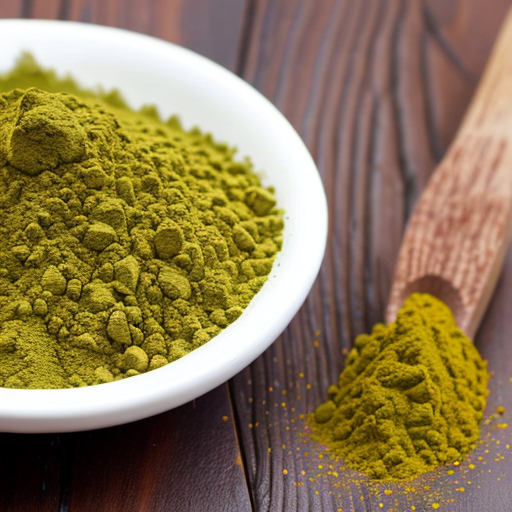Kratom, a naturally occurring plant indigenous to the regions of Southeast Asia, has gained substantial popularity in recent years due to its potential therapeutic effects and its ability to assist individuals with various conditions, including opiate addiction. However, as with any substance, it is of utmost importance to approach kratom usage with caution and responsibility. Among the crucial factors in responsible kratom consumption lies the effective management of dosages. This comprehensive article aims to highlight the significance of dosage management while providing guidance on how to approach kratom usage in a safe and responsible manner.
Ensuring Safety and Minimizing Risks:
The meticulous management of dosages when using kratom is imperative for ensuring personal safety and minimizing potential risks. Kratom interacts with the opioid receptors in the brain, and its effects can vary depending on the dosage consumed. Consuming excessively high doses of kratom may result in unwelcome side effects, including dizziness, nausea, sedation, and even respiratory depression. By conscientiously managing dosages, individuals can decrease the likelihood of experiencing these adverse effects, thereby maintaining a more controlled and positive kratom experience.

For example, if an individual is seeking pain relief, it is crucial to start with a low dosage of kratom and gradually increase it until the desired level of pain management is achieved. This approach allows them to find the balance between effective pain relief and avoiding potential adverse effects associated with excessive dosages.
Discovering the Optimal Effect:
Each individual may respond differently to kratom, making the discovery of the optimal dosage a personal journey. Effective dosage management empowers individuals to explore and determine the amount that provides the desired effects while minimizing any potential negative reactions. By commencing with smaller doses and gradually increasing them over time, individuals can identify the dosage that offers the most beneficial effects for their specific needs, whether it pertains to pain relief, relaxation, or increased focus.
For instance, someone seeking relaxation may find that a lower dosage of a specific kratom strain delivers the desired level of relaxation without inducing excessive sedation. By fine-tuning the dosage through careful management, individuals can achieve the optimal effect they are seeking.
Avoiding Tolerance and Dependency:
Proper dosage management plays a critical role in preventing tolerance and dependency on kratom. Similar to other substances, regular and excessive use of kratom can lead to tolerance, where the desired effects diminish over time, necessitating higher doses to achieve the same results. Furthermore, continuous usage of high doses may result in dependency, wherein the body becomes reliant on kratom to function normally. By adhering to responsible dosage practices, such as taking breaks and using kratom sparingly, individuals can mitigate the risk of developing tolerance and dependency.
For example, individuals who utilize kratom for managing chronic pain may adopt a schedule that incorporates periodic breaks or alternates between different strains to minimize the potential for tolerance and dependency. This strategic approach to dosage management helps maintain the effectiveness of kratom as a pain management tool.
Understanding Strain Potency and Variations:
Kratom is available in various strains, each exhibiting different potency levels and effects. Effective dosage management allows individuals to take into account these variations and adjust their intake accordingly. Some strains may possess higher potency than others, implying that smaller doses can suffice to achieve the desired effects. By being cognizant of strain potency and adapting the dosage accordingly, individuals can optimize the benefits of kratom while minimizing the risk of consuming excessive amounts.
For instance, a person seeking relief from anxiety may find that a lower dosage of a particular strain with known anxiolytic properties is effective in managing their symptoms. Understanding the potency of different strains enables them to fine-tune their dosages for the desired effect
Seeking Professional Guidance:
If individuals are new to kratom usage or have specific health conditions, it is advisable to seek professional guidance when determining appropriate dosages. Consulting with a healthcare professional or an experienced kratom expert can provide valuable insights and recommendations based on individual circumstances. These experts can assist in determining the appropriate starting dosage, guide through the dosage adjustment process, and ensure that kratom usage aligns with overall well-being.
For example, individuals with pre-existing medical conditions or those taking medications that may interact with kratom should consult with a healthcare professional to determine the safest and most effective dosage. Additionally, a knowledgeable kratom expert can provide guidance on strain selection and dosage adjustments based on an individual’s specific needs and goals.
Keeping a Dosage Journal:
Maintaining a dosage journal can be a helpful tool in managing kratom dosages effectively. By documenting the dosage amount, strain, time of consumption, and the observed effects, individuals can track their experiences and identify patterns over time. This information can be instrumental in fine-tuning dosages and determining what works best for each individual. A dosage journal can also help individuals identify any adverse reactions or unexpected side effects, enabling them to make informed decisions about future kratom usage.
For instance, an individual may notice that a certain strain requires a lower dosage to achieve the desired effects compared to others. This observation can be recorded in the dosage journal for future reference, ensuring consistent and effective kratom dosing.
Regular Self-Assessment:
Regular self-assessment is an essential part of managing kratom dosages responsibly. Individuals should regularly evaluate their kratom usage, taking note of any changes in tolerance, efficacy, or potential side effects. By being mindful of these factors and reassessing dosages when necessary, individuals can maintain a balanced and safe kratom experience over the long term.
For example, if an individual notices that their usual dosage is becoming less effective or that they are experiencing increased side effects, it may be a sign of tolerance or a need to adjust the dosage. Self-assessment empowers individuals to make informed decisions and adapt their kratom dosages accordingly.